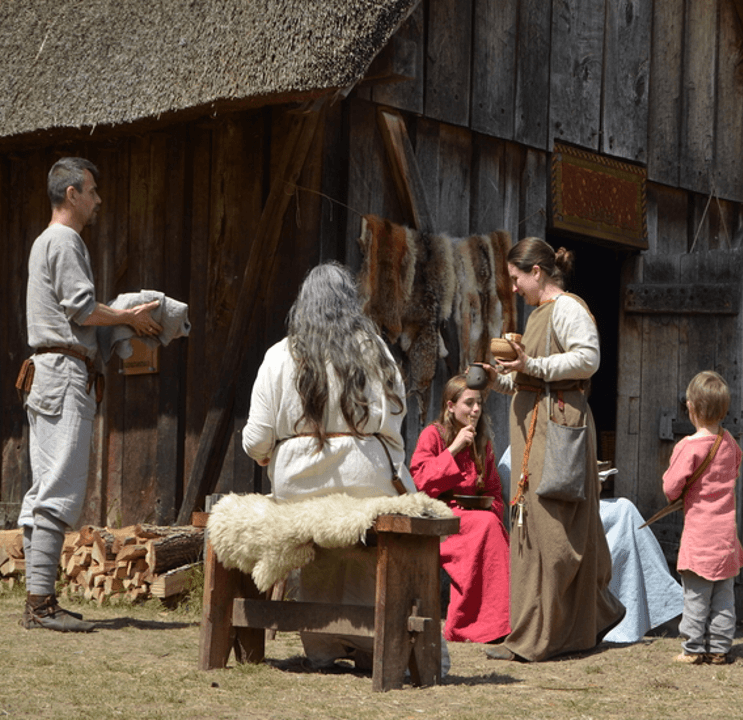
1. Sutton Hoo (Suffolk, England)
A flagship Anglo‑Saxon archaeological site, Sutton Hoo holds the remains of a 7th Century royal ship burial – likely of King Rædwald of East Anglia – complete with extraordinary treasure like the iconic helmet, gold artifacts, and a ship impression in the earth. Excavated in 1939 and fully reopened in 2019, visitors can explore the burial mounds via a new walking route and discover the stories behind each find in the Tranmer House visitor centre.
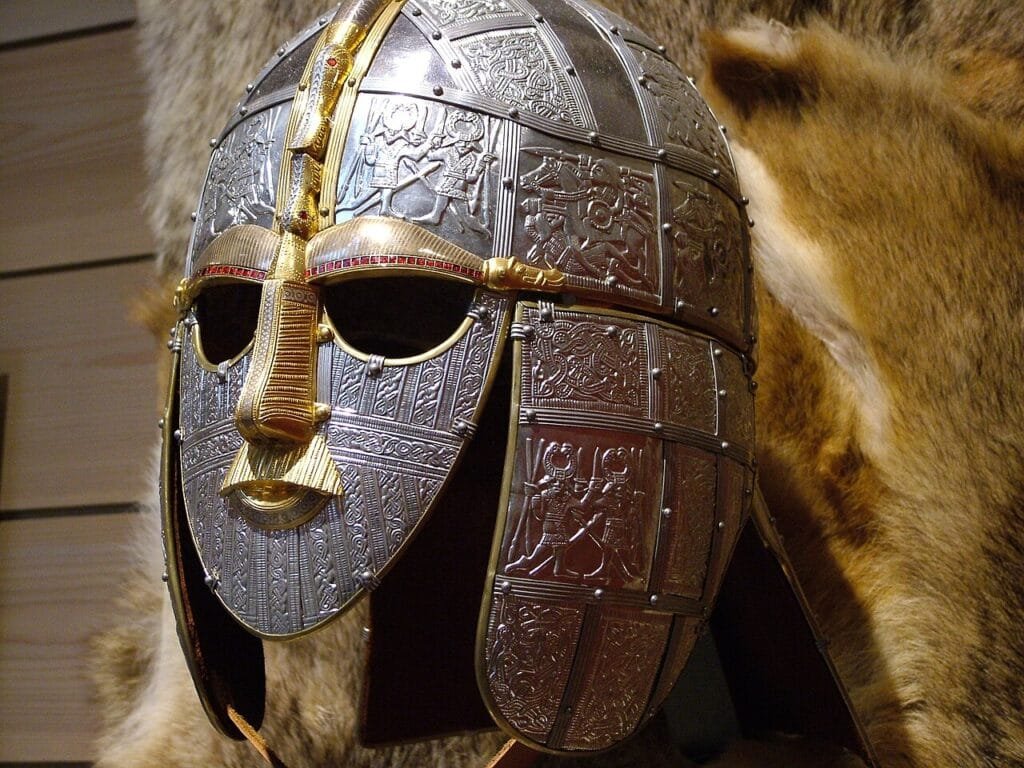
The atmosphere is immersive: you can see re-enactments of the excavation, marvel at a replica longship under construction at Woodbridge’s Longshed, and climb the observation tower above the burial site. Sutton Hoo is managed by the National Trust and operated in partnership with the British Museum.
Official site: https://www.nationaltrust.org.uk/sutton-hoo
2. West Stow Anglo‑Saxon Village (Suffolk, England)
This extraordinary open-air museum reconstructs an entire 5th-7th Century Anglo‑Saxon settlement, built using traditional construction techniques over the original archaeological site. With around 70 sunken-featured buildings originally discovered, the recreated village – complete with halls, workshops, dwellings, and enclosures – brings Dark Age rural life vividly to life.

Pathways through the woodland country park offer a relaxed setting to reflect on early medieval community life. Visit the on-site museum and café, enjoy hands-on demonstrations, and witness costumed interpreters practicing historic crafts.
Official site: https://www.weststow.org/
3. Jorvik Viking Centre (York, England)
At the Jorvik Viking Centre in York, over 40,000 Viking-era objects unearthed in the 1970s come to life through a unique subterranean ride that recreates 10th‑century streets, homes, workshops, and taverns. The atmosphere, complete with sights, sounds, and smells, immerses you in the daily life of the Norse city of Jorvik.
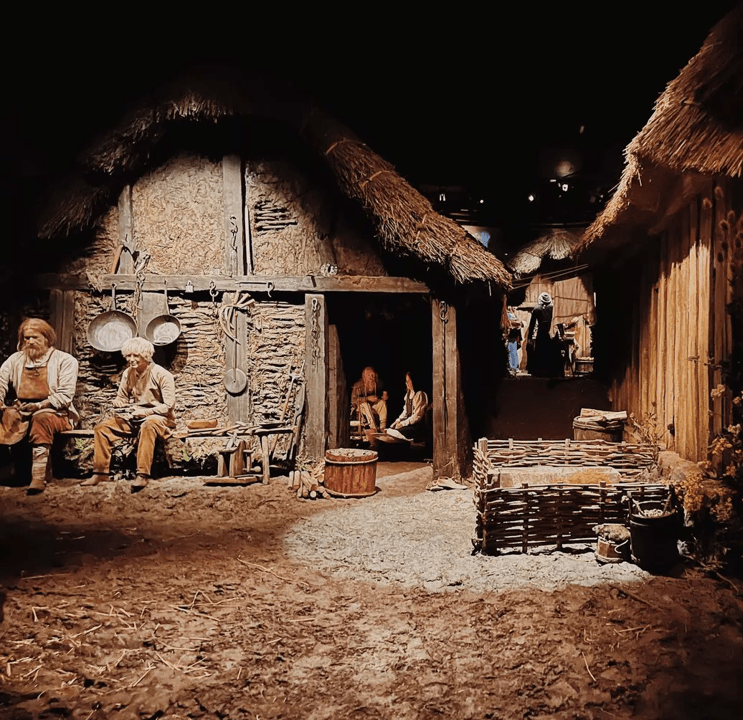
Beneath, the Coppergate dig’s original excavation layers are preserved behind glass. The centre is run by York Archaeological Trust, offering in-depth exhibits, artefact displays, and family events.
Official site: https://www.jorvikvikingcentre.co.uk
4. Lindisfarne Priory & Castle (Northumberland, England)
Lindisfarne Priory stands as the historic epicentre of Anglo‑Saxon Christian activity in Britain. Founded in ad 635 by St Aidan and home to St Cuthbert, this serene island monastery was tragically raided by Vikings in 793 – the opening salvo of centuries of Norse incursions into Britain.
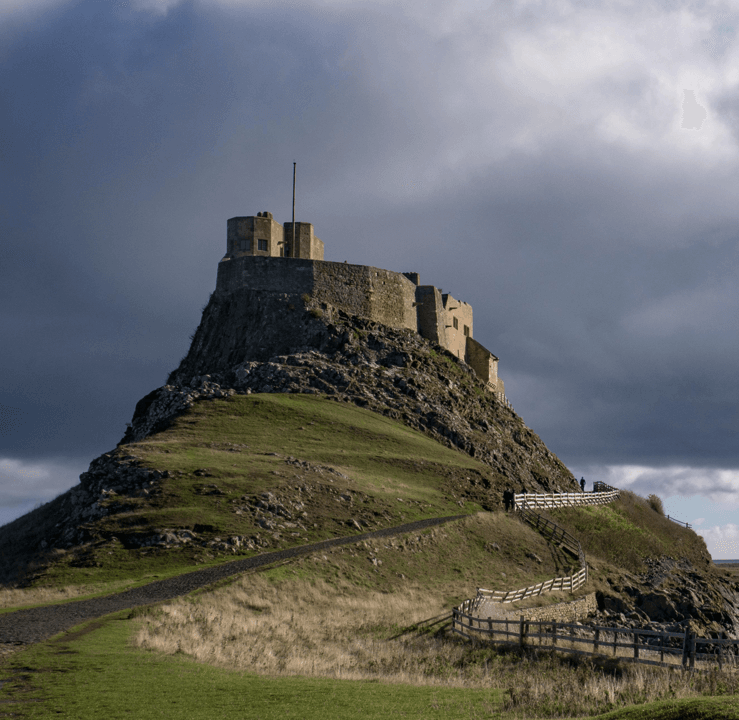
The atmospheric ruins are complemented by a visitor centre showcasing medieval artefacts, Viking depictions, and spiritual context. A short walk leads to Lindisfarne Castle, reusing priory stone and perched above coastal dunes. These sites are managed by English Heritage.
Official site: https://www.english-heritage.org.uk/visit/places/lindisfarne-priory
5. Bamburgh Castle (Northumberland, England)
Perched dramatically on cliffs above the North Sea, Bamburgh Castle was originally the seat of the Anglo‑Saxon kings of Bernicia in the early 7th century and later the site of Viking sieges. While the current structure mostly reflects its Norman rebuild, excavations continue to reveal Artefacts like the famed “Bamburgh Beast” gold plaque and ancient swords. The castle gained huge publicity as the home of Uhtred in the books and TV series The Last Kingdom.
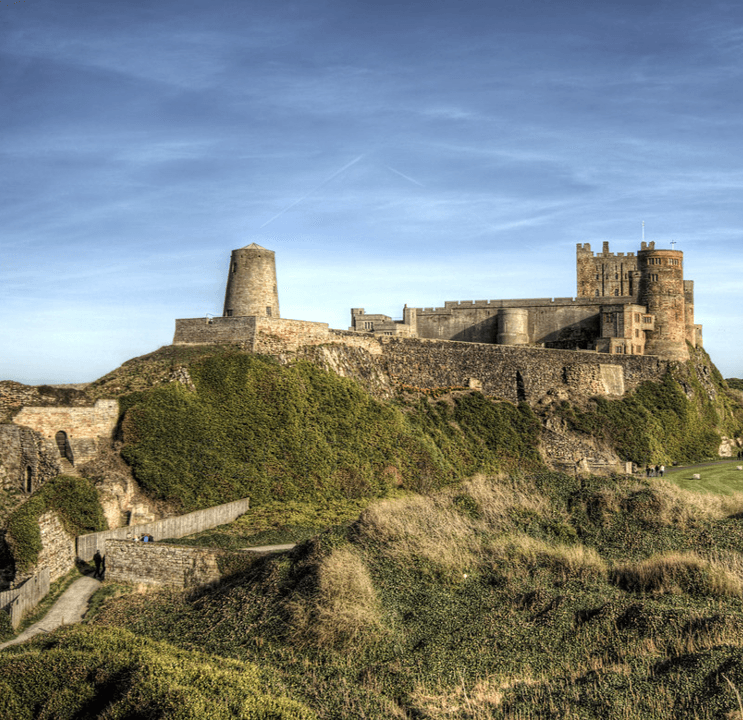
Visitors can tour the grand interiors, medieval chapel, and defensive ramparts while touring ongoing archaeological digs that shed light on its early standing.
Official site: https://www.bamburghcastle.com
6. Ruthwell Cross (Dumfriesshire, Scotland)
The Ruthwell Cross is a monumental Anglo‑Saxon stone cross from the 8th century, renowned for its elaborate carvings and rare runic inscriptions – some scholars believe it preserves the oldest surviving poem written in the Germanic Old English language. Originally broken and restored in the 19th century, it’s now displayed inside Ruthwell church (now in Scotland, but formerly part of the Anglo-Saxon Kingdom of Northumbria) with its dramatic artistry intact.

The cross offers an unparalleled glimpse into Northumbrian religious symbolism, artistry, and early literacy. It’s a designated scheduled monument under Historic Environment Scotland.
Official site: https://www.ruthwell.co.uk
7. Tintagel Castle (Cornwall, England)
Perched dramatically on the rugged cliffs of North Cornwall, Tintagel Castle is one of Britain’s most evocative historic sites, steeped in myth and legend. It has a long association with King Arthur, a link first popularized in the 12th century by Geoffrey of Monmouth.
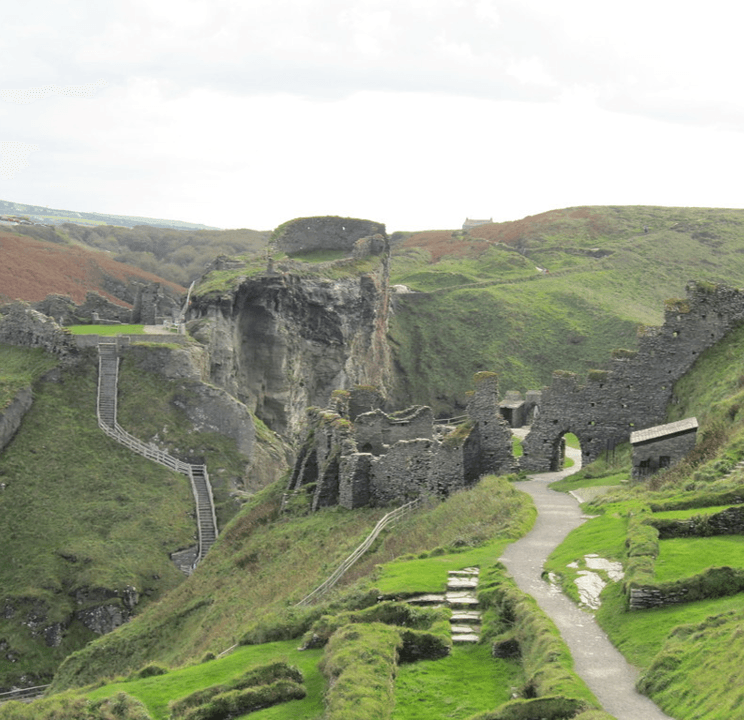
Beyond the Arthurian legends, Tintagel has deep historical roots. The site was a thriving settlement of the Kingdom of Kernow during the post-Roman period (5th-7th Centuries), evidenced by luxury imported pottery and early Christian inscriptions found on-site – clear signs of a high-status community with continental trade links. The remains of a 13th Century Norman castle, built by Richard, Earl of Cornwall, still stand proudly, reflecting the site’s later importance in medieval England.
Official site: https://www.english-heritage.org.uk/visit/places/tintagel-castle/
8. Whitby Abbey (North Yorkshire)
Dominating the clifftops above the North Sea, Whitby Abbey was founded in the 7th century and hosted the pivotal Synod of Whitby in 664 CE, which shaped English Christianity. Although today’s ruins are largely Gothic, the site retains deep Anglo‑Saxon significance, tied to St Hilda’s spiritual leadership and learning.
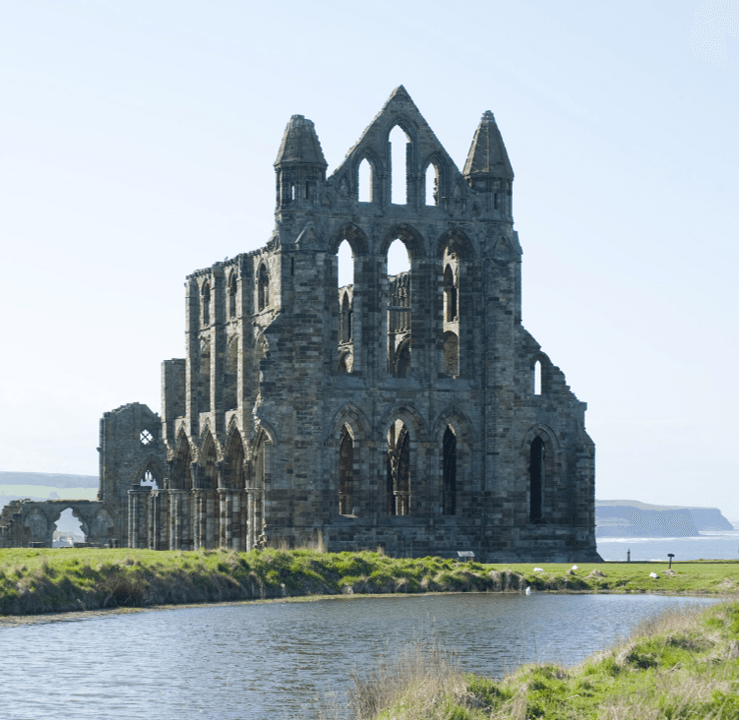
The abbey visitor centre features Anglo‑Saxon exhibits, educational displays, and sweeping coastal views. Combined with nearby St Hilda’s Church and East Cliff heritage walks, it offers a comprehensive experience of early medieval northern England.
Official site: https://www.english-heritage.org.uk/visit/places/whitby-abbey
9. Beaumaris, Caernarfon, Conwy & Harlech Castles (North Wales)
Although post-Dark Ages, these four majestic 13th‑century castles make up the “Iron Ring” built by the English King Edward I in an attempt to subjugate Wales. These four UNESCO World Heritage Sites represent the pinnacle of medieval castle-building in Europe. Designed by the brilliant military architect Master James of St. George, each fortress showcases unique strategic innovations. Together, they form a powerful narrative of conquest, colonization, and control in 13th-century Wales.
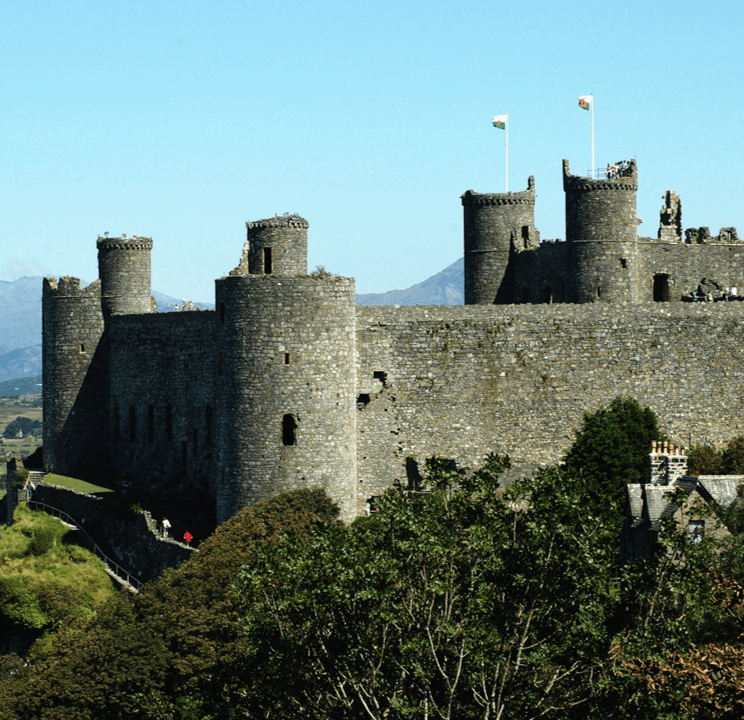
For history enthusiasts, these castles offer an immersive journey into the world of medieval warfare, royal ambition, and architectural mastery. On-site exhibitions, audio guides, and sweeping views bring the stories of garrisons, sieges, and castle life vividly to life. Whether walking the ramparts of Conwy or standing in Harlech’s gatehouse overlooking Snowdonia, visitors will experience the dramatic legacy of English rule and Welsh resistance etched into stone.
Official site: https://cadw.gov.wales/ (search individual castles)




